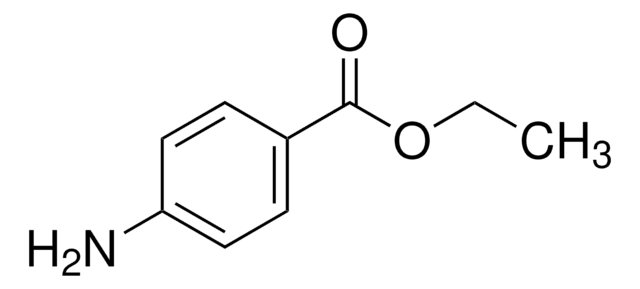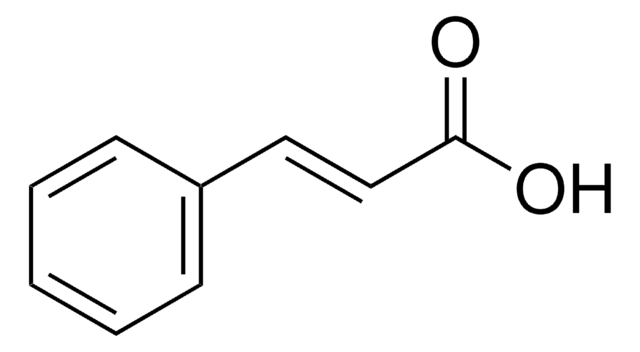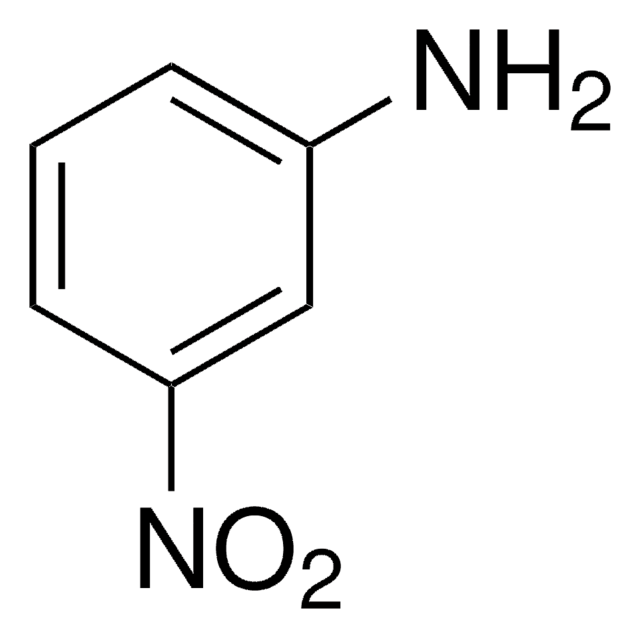76170
Melting point standard 121-123°C
analytical standard
Synonym(s):
Benzoic acid
About This Item
Recommended Products
grade
analytical standard
Quality Level
vapor density
4.21 (vs air)
vapor pressure
10 mmHg ( 132 °C)
autoignition temp.
1061 °F
shelf life
limited shelf life, expiry date on the label
bp
249 °C (lit.)
mp
121-123 °C (±0.3°C)
121-125 °C (lit.)
application(s)
food and beverages
pharmaceutical
format
neat
SMILES string
OC(=O)c1ccccc1
InChI
1S/C7H6O2/c8-7(9)6-4-2-1-3-5-6/h1-5H,(H,8,9)
InChI key
WPYMKLBDIGXBTP-UHFFFAOYSA-N
Looking for similar products? Visit Product Comparison Guide
Related Categories
General description
Application
Features and Benefits
- Melting point calibration standard traceable to primary standards (LGC, London)
- Grade: Analytical Standard
- Uncertainty of measurement up to ± 0.3 °C
- Provided with certificates of analysis and safety data sheet
- A product of analytical standard grade that meets the QC/QA requirements of melting point analysis
signalword
Danger
hcodes
Hazard Classifications
Eye Dam. 1 - Skin Irrit. 2 - STOT RE 1 Inhalation
target_organs
Lungs
Storage Class
6.1C - Combustible acute toxic Cat.3 / toxic compounds or compounds which causing chronic effects
wgk_germany
WGK 1
flash_point_f
Not applicable
flash_point_c
Not applicable
ppe
dust mask type N95 (US), Eyeshields, Faceshields, Gloves
Choose from one of the most recent versions:
Already Own This Product?
Find documentation for the products that you have recently purchased in the Document Library.
Customers Also Viewed
Articles
HPLC Analysis of Benzoic Acid and Sorbic Acid on Ascentis® Express RP-Amide ("Green" Mobile Phase Conditions)
Separation of Acetaminophen, meets USP testing specifications, 98.0-102.0%, powder; Caffeine, meets USP testing specifications, anhydrous; Benzoic acid, meets USP testing specifications; Aspirin, meets USP testing specifications
Protocols
Separation of 4-Hydroxybenzoic acid; Acetylsalicylic acid; Benzoic acid; Salicylic acid; Ethyl 4-hydroxybenzoate
HPLC Analysis of Benzoic Acid Derivatives on Ascentis® C18
Our team of scientists has experience in all areas of research including Life Science, Material Science, Chemical Synthesis, Chromatography, Analytical and many others.
Contact Technical Service










